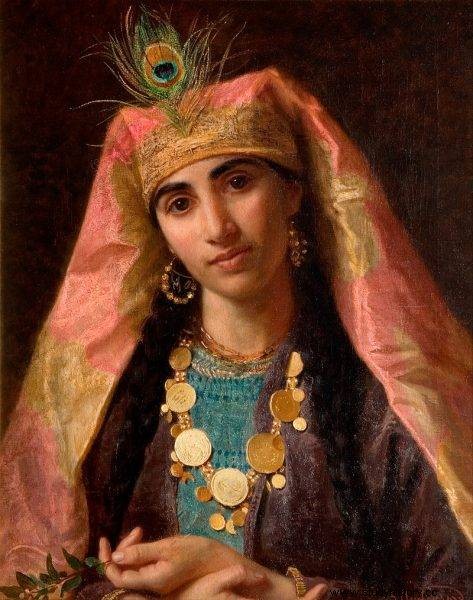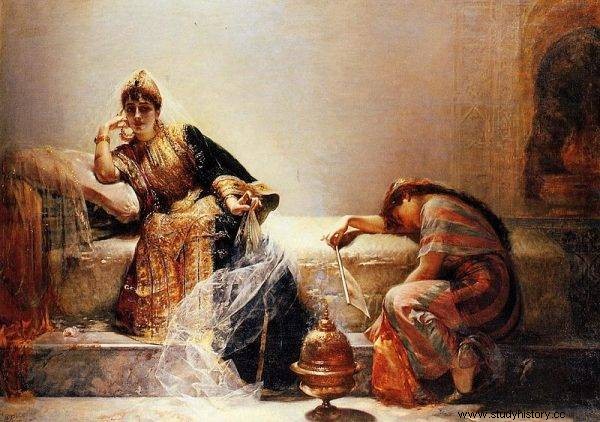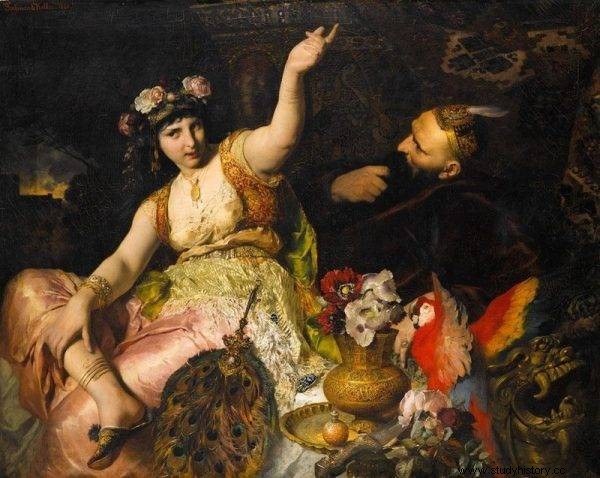Almost everyone knows the story of Ali Baba and the 40 highwaymen. This is where we will meet qiyan - the singing slave for the first time.
The image of the Middle Ages, as we know from the pages of European history, is very different from what that epoch looked like in Muslim countries. It was a time of… renaissance for them in almost every field. European scholars went to university there. They searched for new ideas and principles, and learned about the works of the ancient Greeks and Romans. And contrary to popular belief, it was not a world where only men drew from the achievements of science and art. A perfect example of this is the qiyan, also known as the singing slave.
Almost everyone knows the story of Ali Baba and the 40 thieves in The Book of One Thousand and One Nights. This is where we meet qiyan for the first time. It is about the figure of Mardżany , a wise slave who helped kill the robbers. She was liberated for this and then became the wife of Ali Baba's son . However, this fairy-tale heroine does not fully reflect who the qiyan really were. What was their significance for the development of culture and politics of the caliphates of the time?
The Renaissance of Islam
Currently, qiyan is associated primarily with singing slaves. However, behind this word there is much more than just an image of a musically gifted courtesan, playing instruments and making court feasts pleasant with his voice . The period of their heyday and their splendor falls on the reign of the Umayyad caliphate and the Abbasids. Qiyan was to be found in mansions, cities and in traveling tents from the Middle East through North Africa to Andalusia. But their legend was actually born in Baghdad, ruled by the Abbasids.

Almost everyone knows the story of Ali Baba and the 40 thieves in The Book of One Thousand and One Nights. This is where we meet qiyan for the first time.
It was a time considered by many to be the golden age of the development of Muslim science, philosophy, culture and art . Baghdad itself was then called the City of Peace. It was a rich, developed and cosmopolitan center where nations, cultures and religions mixed. Travelers from Europe and other parts of the world flocked there to learn, experience and discover local scholars, artists and craftsmen. And it was in Baghdad, amidst blooming gardens, crowded souks and lavish mansions, that qiyan culture fully developed.
Women of the golden age
some historians compare women belonging to this group to ancient heteros or Japanese geishas . Most of them were slaves, bought or kidnapped at a young age. They came from various parts of Africa, Europe and Asia. They were provided with a very good education in the field of art, poetry, philosophy as well as science. The best of the best qiyans were educated in Medina and Al-Kufa and then enter the most important and richest courts of the Caliphate.

Beautiful, educated and talented, they were among the most expensive slaves.
Apart from playing the instruments, beautiful voice and dancing, they were expected to be able to conduct conversations at a high level. Why? Well, qiyan often took part in events attended by diplomats as well as the local social and scientific cream. Beautiful, educated and talented, they were among the most expensive slaves. Exorbitant sums were paid for them. Of course, in addition to their role as "companion," they also offered sexual services. They were associated with licentiousness for a reason. Sexuality was an important part of their attractiveness. Even so, many researchers of the time did not put them on a par with prostitutes. However, it cannot be forgotten that qiyans also performed for the general public in dedicated places, some of which were just ... brothels.
Age icons
In most cases, however, singing slaves were some sort of home status indicator in which they stayed. Nor were they slaves in the "worst" sense of the word. In palaces, they were often within the shadow economy. On the one hand, were triggered, but on the other hand, they had to remain outside as qiyan.
The position of many of them can be compared to modern music stars . Qiyan were considered style icons. Women throughout the empire tried to emulate them. In the courts of the caliphate singing slaves were treated with respect. They had their own servants and were often surrounded by noble offspring staring at them and listening to their stories. Not only did they play familiar melodies and poetry, but also created their own music and lyrics. Their works are placed on a par with the works of outstanding male artists of that era. Qiyan also enjoyed sports. They especially like archery and horse riding.
Mothers of the rulers
Their beauty, education, intelligence and multitude of talents made them very influential women. Some have even managed to reach for power, an excellent example of which is the Al-Khajzuran from Yemen .
Kidnapped as a child and educated on qiyan, was considered one of the most gifted singing slaves of her time . With her beauty and skills, she stole the heart of the Caliph Al-Mahdi (ruled in the years 775–785). The couple got married. Their union gave birth to the most famous Abbasid caliph - Harun al-Rashid. Al Khaizuran played a significant role in his rise to power. This gave her the independence that her position as Queen Mother gave her. Caliph Harun al-Rashid himself, with his achievements, went down not only in the pages of history, but was also immortalized in the pages of the "Book of One Thousand and One Nights".

Unfortunately, over the centuries, the image of qiyan has become very shallow, especially by Western civilization.
Unfortunately, over the centuries, the image of qiyan has become very shallow, especially by Western civilization. This was started by the Victorian Orientalists. From educated, athletic and talented women, actively participating in culture, art and politics, they turned into ... sex slaves, half-naked dancers entertaining the company during hot, debauched Arab nights . Time, however, did not allow us to completely forget about their history. It is read again from the pages of old manuscripts, restoring qiyan to its proper place in history.
